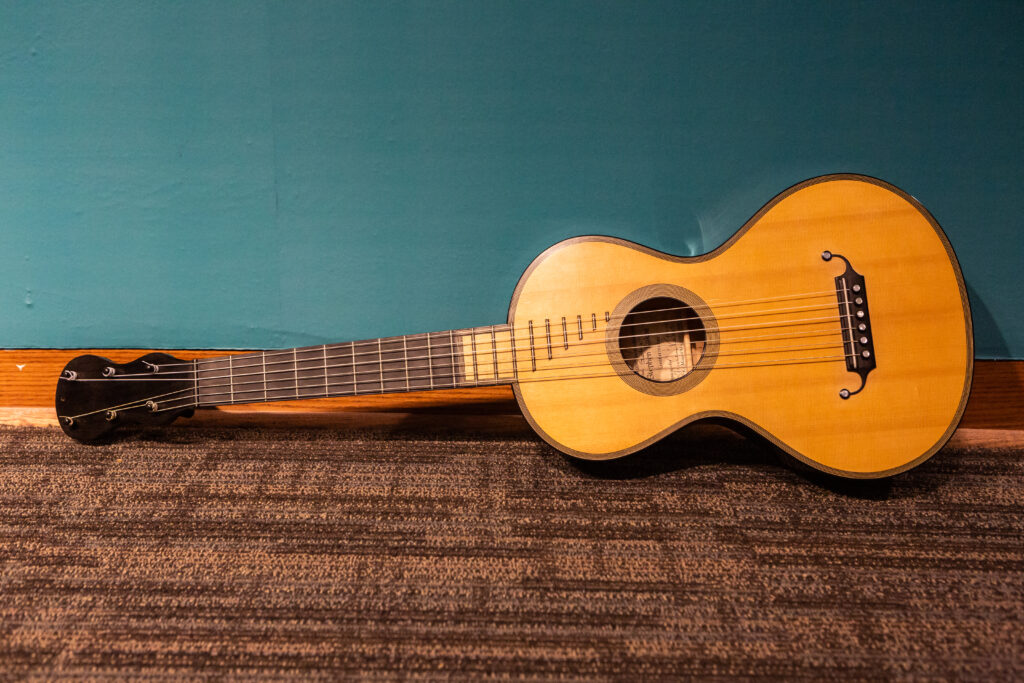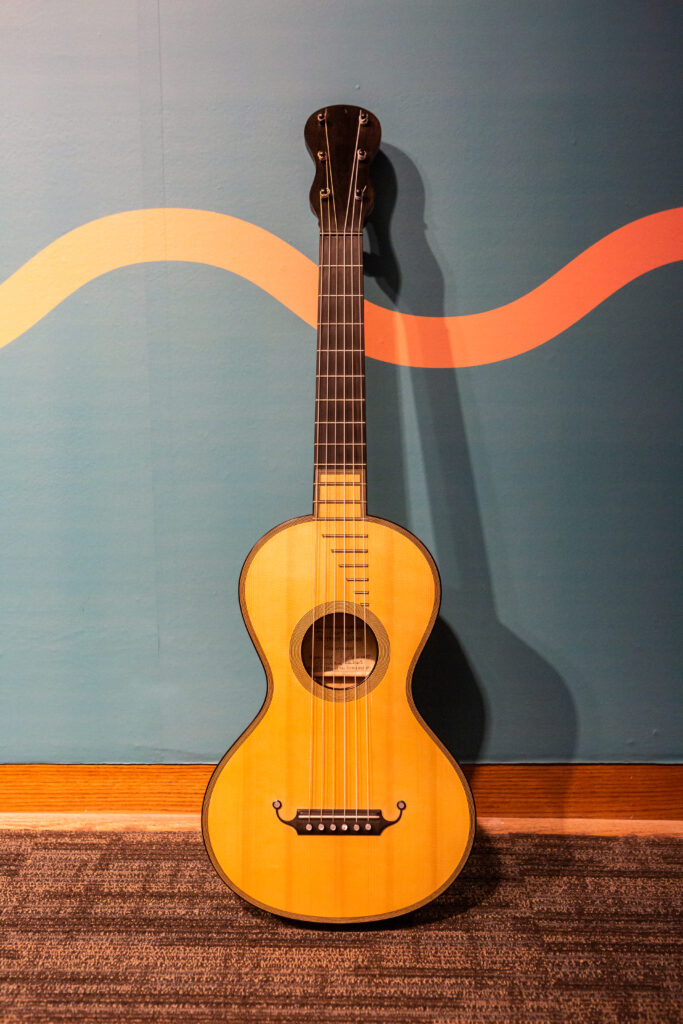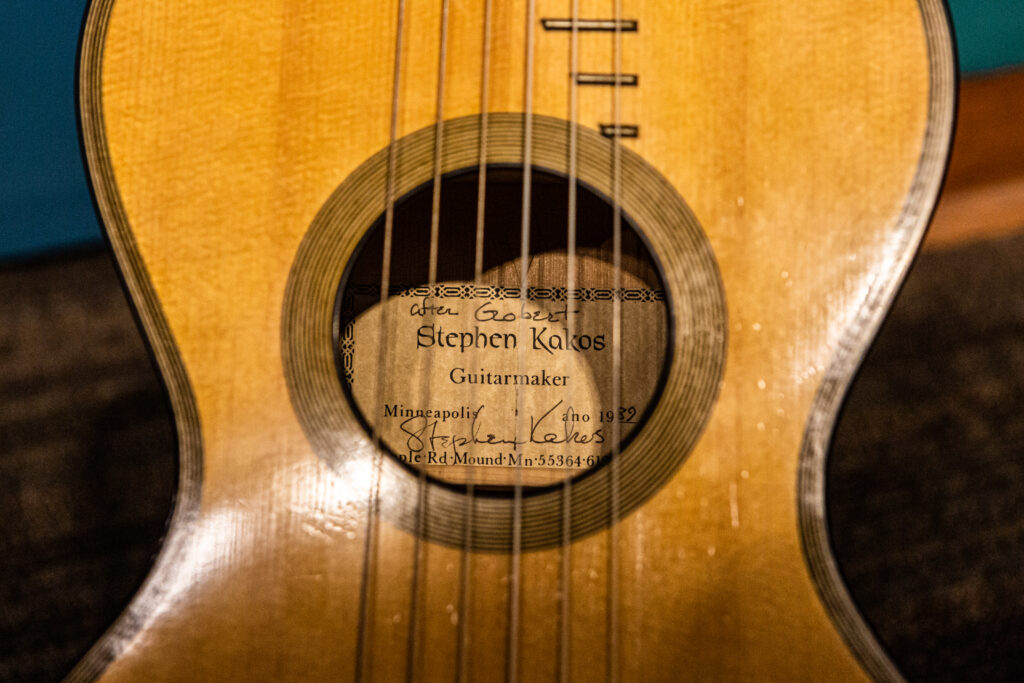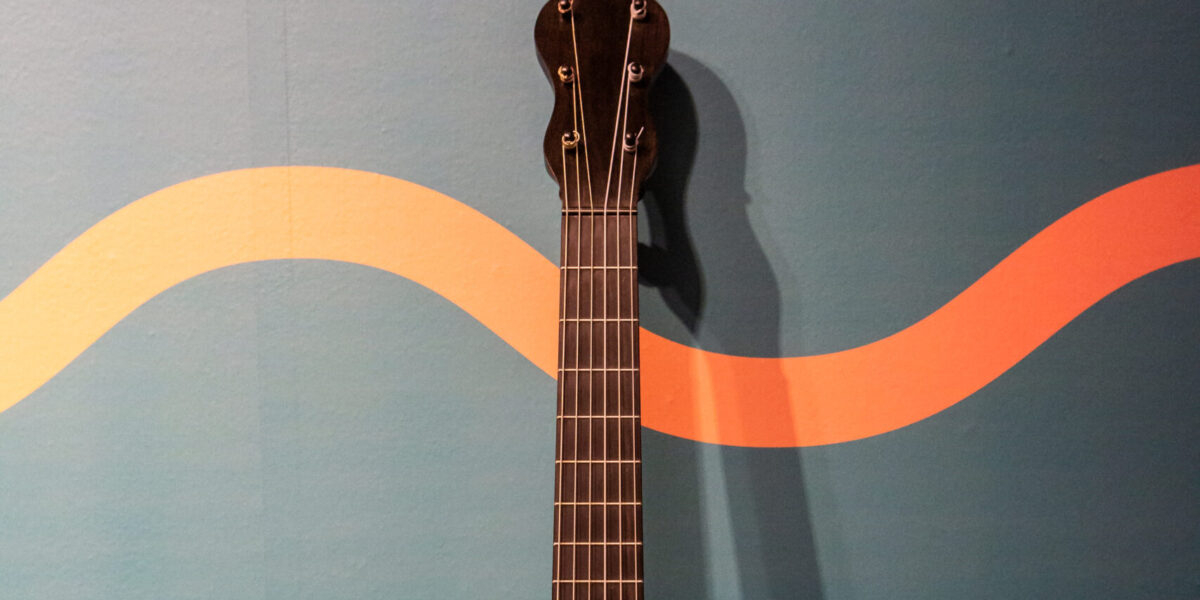Reproduction 1988
Copy of instrument by Jean-Baptiste Vuillaume, ca 1830.
Made for the Schubert Club by local luthier named, Stephen Kakos from Minneapolis in 1989.
It is an EXACT replica in every way to the original guitar made by French luthier Grobert around 1830.
This original is on exhibit in the Musee de la Musique in Paris.
Kakos worked with the detailed and complete schematic designs of that original which were made available to him from the National Conservatory in Paris.
The same woods of the original are also used in this replica – the sides are a light colored rosewood, the back is pine with a thin external veneer of dark rosewood.
The neck has an ebony veneer as does the peg head.
Guitars like this from the early Romantic period are similar to modern classical guitars in the same number of strings, same tuning and same basic body shape.
However, generally these early guitars were more balanced between bass, mid-range and treble and were also easier to play. During this “Golden Age of Guitar”, hordes of amateurs took up the guitar especially in Paris and Vienna.
Also guitars from this period blend especially well with fortepianos of the same period (WHICH IS UNLIKE THE blend between MODERN GUITAR AND PIANO). This explains the popularity of this combination with composers of this era like Carl Maria von Weber (who was a skillful guitarist), Paganini, Giuliani and others. Several of our Hill House concerts have included the combination of Jeffrey Van playing this instrument along with one of SC’s keyboards replicating the same period. Jeffrey said audience would often say if they closed their eyes it would sound like only one instrument.
This guitar has left MN as well and been featured as a solo instrument at Indiana U and in a Hill house concert that took place in Spokane, WA.
The original guitar was owned by Jean-Baptiste Vuillaume who was at the time the most important violin maker in Paris. He loaned the guitar to the Paganini during his second visit to Paris in 1838 and later given to Hector Berlioz as a gift at which both great musicians signed it in token of their friendship and love of the guitar.
Berlioz eventually gave it the instrument museum of the Paris Conservatory where it remains today.





